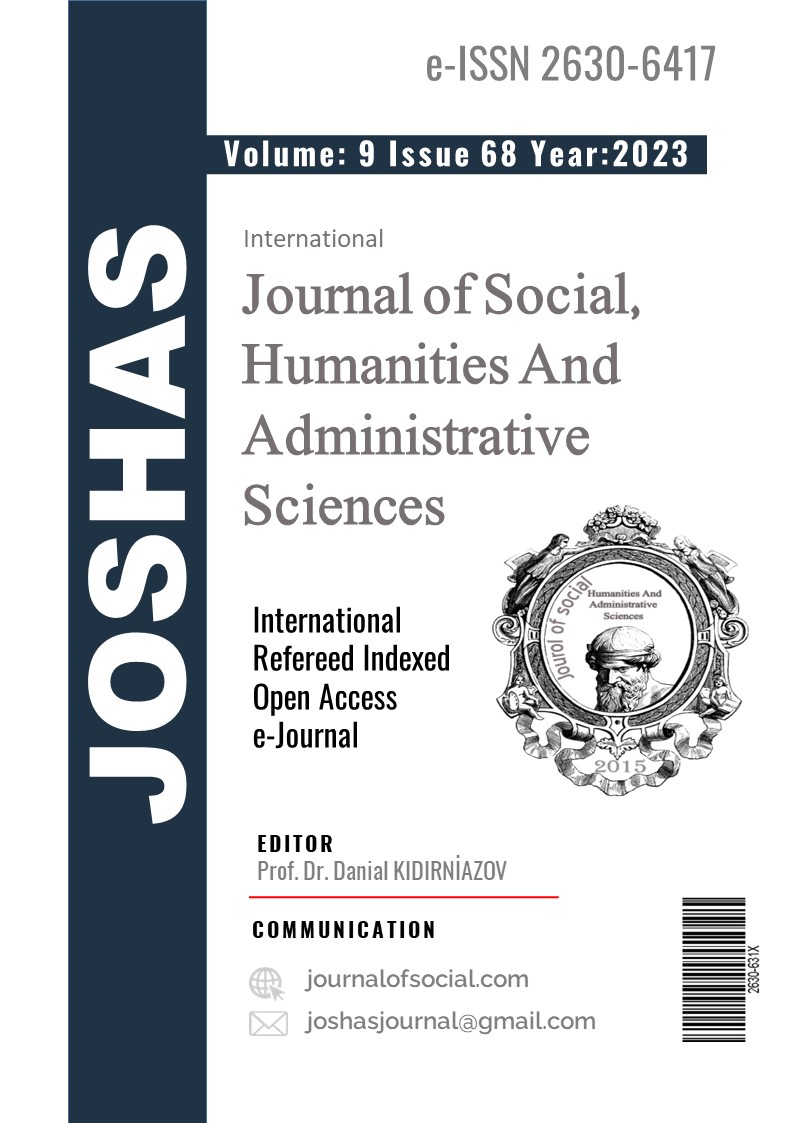Author :
Abstract
Bu çalışmada yetişkin grubuna yönelik olarak, sosyal becerileri değerlendirmek amacıyla bilişsel işlevler ve duyuşsal süreçlere odaklı, iki alt boyutlu bir işaret listesinin geliştirilmesi planlanmıştır. Çalışma, madde havuzunun oluşturulması, biri bir, diğeri iki uygulama içeren iki ayrı veri toplama çalışması olmak üzere üç aşamada gerçekleştirilmiştir. Çalışmada önce ilgili literatür doğrultusunda madde havuzu oluşturulmuştur. Birinci çalışma uygulamasına, 18-65 yaşları arasında 398 erkek, 380 kadın olmak üzere toplam 778 kişi katılmıştır. İkinci çalışmanın her iki uygulamasına da aynı kişilerden oluşan 18-57 yaşları arasında 24 erkek, 26 kadın olmak üzere toplam 60 kişi katılmıştır. İlk çalışma sonrasında madde tepki kuramı ve madde analizi kullanılarak 45 madde seçilmiştir. İlk çalışma verisi iki parçaya bölünmüş ve her birine açıklayıcı ve doğrulayıcı faktör analizi uygulanmıştır. Seçilen maddelerden oluşturulan ölçeğin (A Sosyal Beceri İşaret Listesi-45) “Duyuşsal Bileşenler” ve “Bilişsel Bileşenler” olarak isimlendirilen iki alt boyutunun, toplam varyansın %34,808’ini açıkladığı görülmüştür. Doğrulayıcı faktör analizi sonuçları iki boyutlu yapının zayıf model uyumu gösterdiğini ortaya koymuştur. Birinci çalışma verisinde, iç tutarlılık güvenirlik katsayısı, ölçek bütünü için 0,935, Duyuşsal Bileşenler alt boyutu için 0,910, Bilişsel Bileşenler alt boyutu için 0,881 bulunmuştur. İkinci çalışma verisinde test-tekrar test güvenirlik katsayısı, ölçeğin bütünü için 0,825, Duyuşsal Bileşenler alt boyutu için r = 0,782, Bilişsel Bileşenler alt boyutu için r = 0,833 elde edilmiştir. Elde edilen sonuçlar, A Sosyal Beceri İşaret Listesi-45’in ilk geçerlik ve güvenirlik değerlerinin kabul edilebilir düzeyde olduğunu göstermiştir.
Keywords
Abstract
In this study, it was planned to develop a two sub-dimensional check list for the adult group, focusing on cognitive functions and affective processes, in order to evaluate social skills. The study was carried out in three stages, the creation of the item pool, and two separate data collection studies, one with one application and the other with two applications. In the study, first, an item pool was created with the relevant literature. A total of 778 people, 398 men and 380 women aged between 18-65 years, participated in the first study. A total of 60 people, 24 men and 26 women, between the ages of 18-57, who were the same people, participated in both applications of the second study. After the first study, 45 items were selected using item response theory and item analysis. The first study data was divided into two parts and explanatory and confirmatory factor analysis was applied to each of them. It was observed that the two sub-dimensions of the scale (A Social Skills Sign List-45) composed of selected items, named "Affective Components" and "Cognitive Components", explained 34,808% of the total variance. The confirmatory factor analysis results revealed that the two-dimensional structure showed poor model fit. In the first study data, the internal consistency reliability coefficient was found 0.935 for the whole scale, 0.910 for the Affective Components sub-dimension and 0.881 for the Cognitive Components sub-dimension. In the second study data, the test-retest reliability coefficient was 0.825 for the whole scale, r = 0.782 for the Affective Components sub-dimension, and r = 0.833 for the Cognitive Components sub-dimension. The results showed that the initial validity and reliability values of the A Social Skills Sign List-45 were at an acceptable level.





